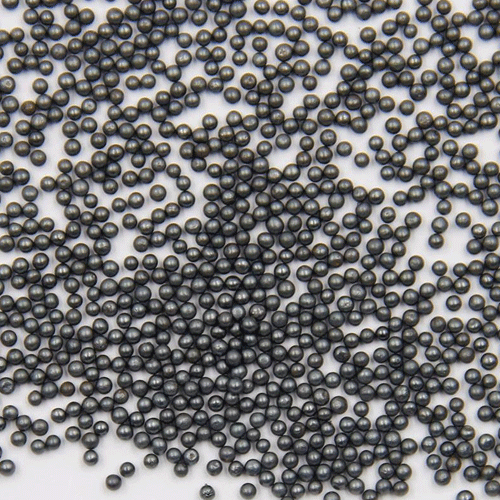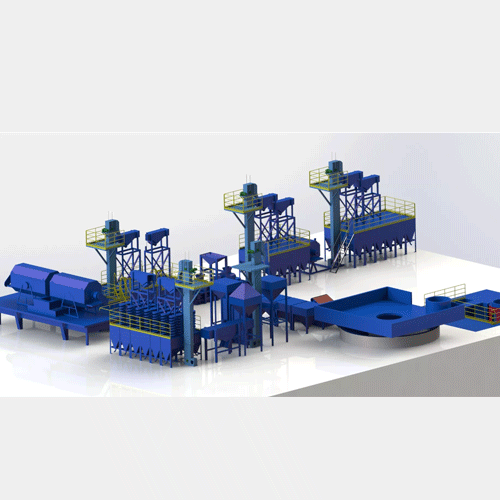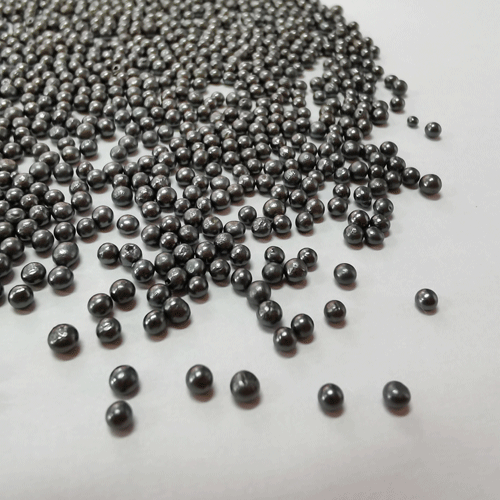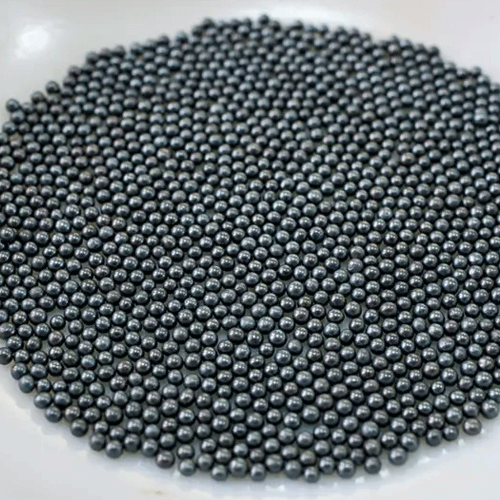Several basic elements of shot peening are listed in this article and introduced in conjunction with the complexity of shot peening standard formulation. The following are the three major elements of shot peening: 1. Shot peening material 2. Shot peening intensity 3. Shot peening coverage rate 1 The most widely used shot materials for shot peening are cast iron shot, cast steel shot, steel wire cutting shot, and glass shot. , ceramic pills and stainless steel pills. They all have the following common characteristics: nearly spherical shape, high hardness, good consistency and reasonable cost.
The choice of shot material is usually based on the material of the part. Parts made of ferritic steel materials are usually shot blasted with cast iron shots, cast steel shots or passivated steel wire cutting shots, because the above materials are all ferrite. If ferrite shot is used for shot blasting stainless steel parts, the parts will be at risk of electrochemical corrosion. Different metals and alloys have different electrode potentials. When two or more metals are in contact together, one metal will be the cathode and the other metal will be the anode. Aluminum alloy metal parts have low hardness and usually require glass shot or ceramic shot for shot peening, which can also avoid the problem of electrochemical corrosion. There are strict specifications for process control of the quality and size of pellets. The continuous impact of the pellets in use will cause wear and shape changes, and the condition of the pellets will deteriorate. The residual stress of parts after shot peening is directly related to the size of the shot, so a vibrating screen needs to be installed on the equipment to control the size of the shot. The size range of shot diameter is 0.2mm~3.4mm. In most cases, the diameter of shot peening shot is below 1.0mm. Shot peening standards setters need to decide on shot size and type.
2 Shot peening intensity The standard setting of shot peening intensity is crucial for parts. The standard setter needs to specify the upper and lower limits of shot peening intensity, such as 0.20~0.26mmA. The reason why the shot peening intensity is a range is because it is difficult to accurately control the shot peening intensity to a value. The optimal choice of shot peening intensity requires a lot of testing, including the type of material, type of load, thickness of the part, etc., so the choice of shot peening intensity needs to be carefully considered. The shot peening intensity of the vertical shot beam on the surface of the part is greater than that of the non-vertical case. Shot peening standard setters often stipulate that the required shot peening intensity must be tested at the specified location, and an Almen test block (Almen test piece holder) with a suitable angle must be installed at this location. For these designated locations, the strengthening effect of the shot peening beam must be achieved.The "magical" residual compressive stress hardened layer formed on the surface of the part after shot peening can be up to 1mm thick. There are charts describing the relationship between shot peening intensity and part material and the thickness of the residual compressive stress hardened layer. Here is a relatively rough formula: the thickness of the residual compressive stress hardened layer is 2/3 of the A-type shot peening intensity. The formulation and optimization of shot peening intensity for parts is very complex because it is affected by many factors. As early as 1958, Fuchs suggested that for general applications, a peening intensity of 0.25 to 0.35 mmA (0.010 to 0.014 in. A) was appropriate. He also pointed out that the thickness of the part, the material of the part, the surface condition of the part before shot peening (whether there are cracks and dents), etc. are also many factors that determine the fatigue life of the part after shot peening. This shows that the optimization of shot peening intensity requires comprehensive consideration. Even if many relevant factors are taken into consideration, it may not be possible to determine whether the shot peening process can really improve the life of the parts. A large number of actual tests are required. verify.
The "magical" residual compressive stress hardened layer formed on the surface of the part after shot peening can be up to 1mm thick. There are charts describing the relationship between shot peening intensity and part material and the thickness of the residual compressive stress hardened layer. Here is a relatively rough formula: the thickness of the residual compressive stress hardened layer is 2/3 of the A-type shot peening intensity. The formulation and optimization of shot peening intensity for parts is very complex because it is affected by many factors. As early as 1958, Fuchs suggested that for general applications, a peening intensity of 0.25 to 0.35 mmA (0.010 to 0.014 in. A) was appropriate. He also pointed out that the thickness of the part, the material of the part, the surface condition of the part before shot peening (whether there are cracks and dents), etc. are also many factors that determine the fatigue life of the part after shot peening. This shows that the optimization of shot peening intensity requires comprehensive consideration. Even if many relevant factors are taken into consideration, it may not be possible to determine whether the shot peening process can really improve the life of the parts. A large number of actual tests are required. verify.
Shot Peening Coverage Shot peening standard setters must specify the coverage of shot peened parts. If you want to find out what the optimal coverage of a part is, there is no other better way than a lot of experimentation. Currently, there are two factions regarding the appropriate coverage rate. One faction holds the view that the higher the coverage rate, the better. This has resulted in some vague coverage requirements, such as the 300% coverage requirement (actually That is 3 times the shot peening time for "100%" coverage). Another school of thought believes that the optimal coverage for most applications will not exceed "100%". It is currently recognized that when the coverage rate is higher than 98%, it is difficult to measure the coverage rate. Therefore, the currently accepted view is that a coverage rate slightly less than 100% is considered "complete coverage".
 Metal surface shot peening process
Metal surface shot peening process
 Grinding Applications in the Automotive Industry
Grinding Applications in the Automotive Industry
 Tips and features for using shot blasting machine steel shots
Tips and features for using shot blasting machine steel shots
 Applications of low carbon steel shot
Applications of low carbon steel shot